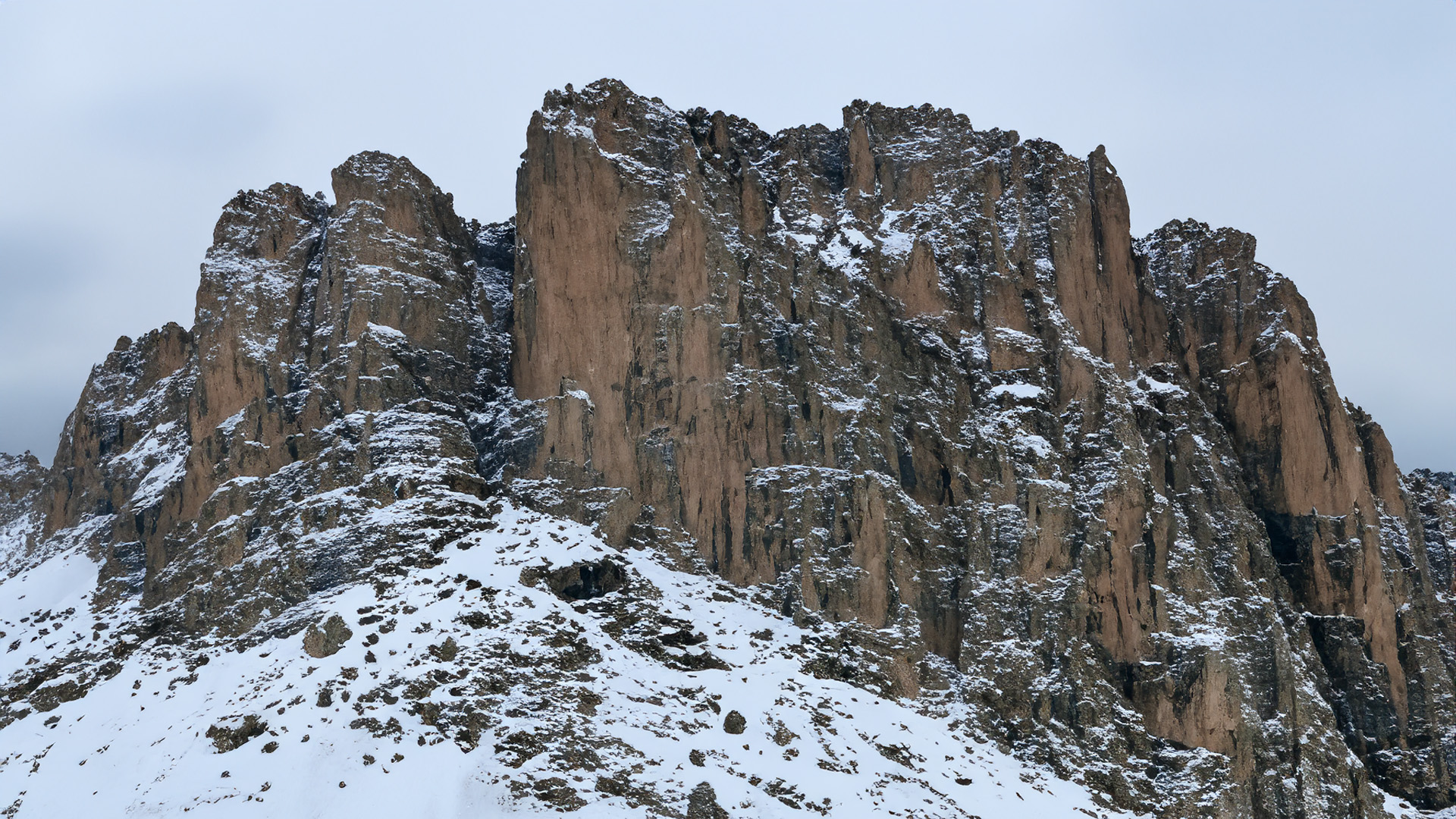I am a complete sucker for climbing films, documentaries and series. I’ve never actually done any climbing. Most of my walks in the mountains have been exactly that – walks. I’ve watched docs like Touching the Void and The Alpinist, and seen dramas such as The Eiger Sanction and of course, Cliffhanger. I’ve also seen the excellent documentary, Free Solo, in which the rock climber, Alex Honnold, becomes the first person to ascend El Capitan in Yosemite National Park free solo. That is to say, he had no ropes.
It’s an incredible film, and beautifully directed by Elizabeth Chai Vasarhelyi and Jimmy Chin. The production team worked with a range of camera operators both on the cliff and shooting from much further afield. But I confess that I could not have watched the film if I hadn’t already been aware that Honnold did indeed make it to the top successfully.
Now Honnold is back in a three part National Geographic Channel (“Nat Geo” these days) documentary called Arctic Ascent with Alex Honnold. The documentary follows Honnold and five companions as they cross Greenland to attempt a previously unclimbed 4000 foot sea wall in a remote part of the country.
This is a fine documentary and we’re introduced to all six of the team who, before attempting the main climb, first cross glaciers and ice sheets, and attempt another climb before the main event. One of the team members is glaciologist, Heïdi Sevestre, who at various points collects core samples of rocks, and measures the ice sheet depth using a radar-type device. A relatively simple yet powerful experiment sees Heïdi dig two snow pits very close to one another, leaving a thin wall of snow between them. Then by darkening one pit (basically pulling a tarpaulin over the top) you can look for lines in the wall and see how frequently the temperature has risen to such an extent that there was a brief “melt” – causing a line to run through the snow. It seems like counting a tree’s age using tree rings.
By studying what happened in the past, we will better be able to understand what climate change is likely to bring for us in the future.
I really enjoyed the two parts I’ve seen so far, with the third airing this evening in the UK.
But I do have one complaint. I don’t think the production is entirely playing fairly with us. We’re told that the “six” are crossing the ice sheet together, when it’s quite clear that there’s a production team accompanying them. We see the six trying towing sleds of gear across the snow, viewed from beautiful drone shots. None of the six seems to be piloting that drone. Even when one team member does use a drone to look for moulans, we get a drone shot of that drone!
Then, when the team climb the first cliff, we get lots of close up shots from what are obviously a production crew being lowered from ropes above. When they reach the top, they magically have skis to continue.
Some of the scientific kit seems very weighty and has clearly been helicoptered in. There is a brief mention of leaving kit for the support team to collect, but it all just seems a very “old” way of making these documentaries. You can’t pretend to be in the middle of nowhere and not reference the crew. Or if you don’t, then don’t pretend there are just six of you.
When they reach the water’s edge at the end of episode two, they’re met by other members of the team in boats. The six main characters have obviously carried out some useful work and been through some tough times, but there are others around too, and it just feels invidious not to mention them.
I still really enjoyed both the parts I’ve seen so far, and will watch the final episode with interest. But in 2024, you have to let some light in on how you’re making a documentary.
Arctic Ascent with Alex Honnold is on Nat Geo in the UK, but seemingly not on Disney+ in the UK, even though there’s a Nat Geo section. In other parts of the world, that may not be the case.
Photo created with Adobe Sensei AI using the prompt: “A sheer cliff in a snowy mountainous landscape“


Comments
10 responses to “Arctic Ascent with Alex Honnold”
Yes, I agree, I am just watching right now, and had the same questions throughout the beginning. Who is filming the first climber? It was obviously a camera above them and also a drone filming a drone and all the heavy equipment and the skis. There should have been more mention of the production crew.
I think by the final climb it’s a bit simpler Alex and Hazel doing much of their own filming, although a nameless camera person still seemed to be right at the top.
Thank you for bringing the filming up! That’s what I was trying to Google to see how they filmed this and happily I found your post.
I absolutely give tremendous credit and respect to the excellent climbers/
researchers/experts, but there are several moments that caught me off guard… like when Hazel makes her morning ascent of the second difficult section (ep.2), she clips in at the end of that section and is talking to a camera. So, clearly someone made their way up, secured an anchor and then filmed… or am I seeing this wrong? I’m asking that honestly because I know in editing, timelines can get a little shuffled around. There are other moments the 6-man team seem to be talking to a person and not a GoPro.
Just curious; it’s awesome so far. I just thought this place had never been ascended? Or am I a horrible viewer that missed those details?
@CBear – I’m only a viewer, so I don’t know for certain. But Google seems to be sending others wondering towards my blog!
My belief is that for the first climb in episode one, there were certainly additional climbers shooting the team. I don’t think anything was faked, but that probably crew members were helicoptered to the top of that climb and then abseiled down to shoot the climbing team going up. I believe that’s how some of the Free Solo footage of Honnold’s climb on El Capitan was shot. They tend to be quite trusted climbing camera crews who know how close or not they can get to Alex. I believe the way it works is that they’re lowered down to get some closer shots, and then they go back up to get clear and out of the way for long-lens and drone shots.
For the bigger climb on the sea cliff, there seemed to be less of this. More of the footage appeared to come from either GoPros or drones. But there was again, definitely somebody at the top to shoot them as they reached it. Both climbers spoke directly to a camera operator. My guess would be that this second climb was so dangerous that even abseiling down the cliff face to where Alex and Hazel were climbing might have caused problems with loose rocks, so a minimal crew was probably dropped from a helicopter on the top to shoot elements from there.
Additional close-up shots of hands and feet were probably shot lower down and dropped in to break up the long-lens, drone and GoPro shots.
As far as I’m aware, neither ascent had been climbed before, but that doesn’t mean that a film crew couldn’t be dropped in by helicopter.
I’m sure that the climb itself went exactly as portrayed. It’s just the other stuff surrounding it that left questions.
As you say, despite these small production criticisms, I really did enjoy this series, and really appreciated everything the entire team did.
Interesting film, but all the global warming alarmism made it really hard to watch. Show them climbing and the challenges they faced, but I wished they’d leave the ridiculous hyperbolic commentary out.
Agree that it was a terrific show and keeping it to three parts was just right. I also agree that it’s just weird to not reference the rest of the team and camera operators. It’s 2024 and it’s ridiculous to ignore people who are obviously right there! I couldn’t stop thinking about it.
I agree that mention at least of the film crew should have been included. It would be good to see the others who are just as whacky as the climbers for doing this crazy, crazy stuff.
g8g3o0
I totally agree. I can’t help but feel the presence of the photographers and equipment handlers who are also doing an epic journey and dealing with oftentimes delicate equipment in such a severe environment. They are also heroic, and I would love to see them credited – even if it is just a group shot of them and their equipment at the end of the series. (Like the 20 minute “making of” addenda by David Attenborough and other wildlife video teams provided at the end of their epic series.) I can’t help but think they must have a helicopter and a fairly large ice-hardened expedition boat to support this climbing expedition.
I agree with most of the comments above. Clearly there many more people involved in this effort. But what really pissed me off was how little, if any credit was given to Hazel Findlay who did some incredible lead climbing over some really scary gnarly rock.